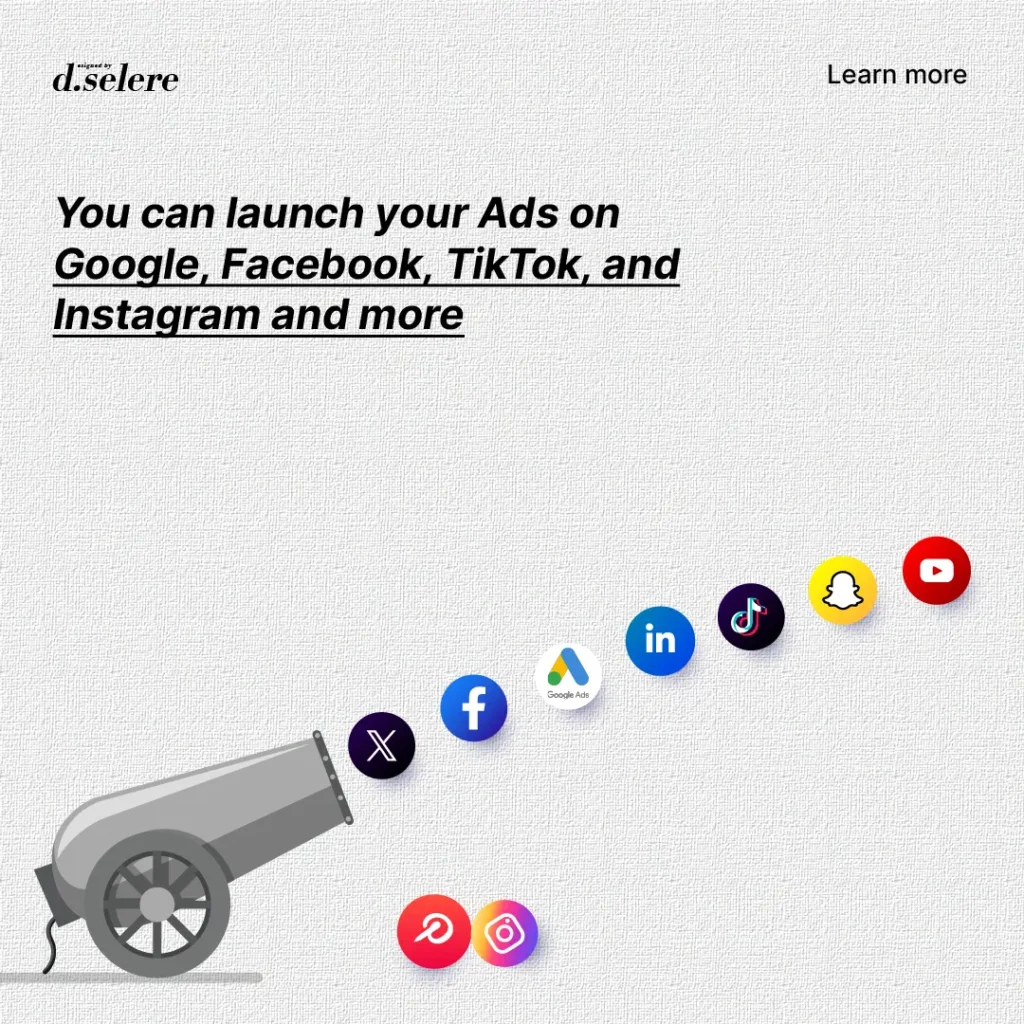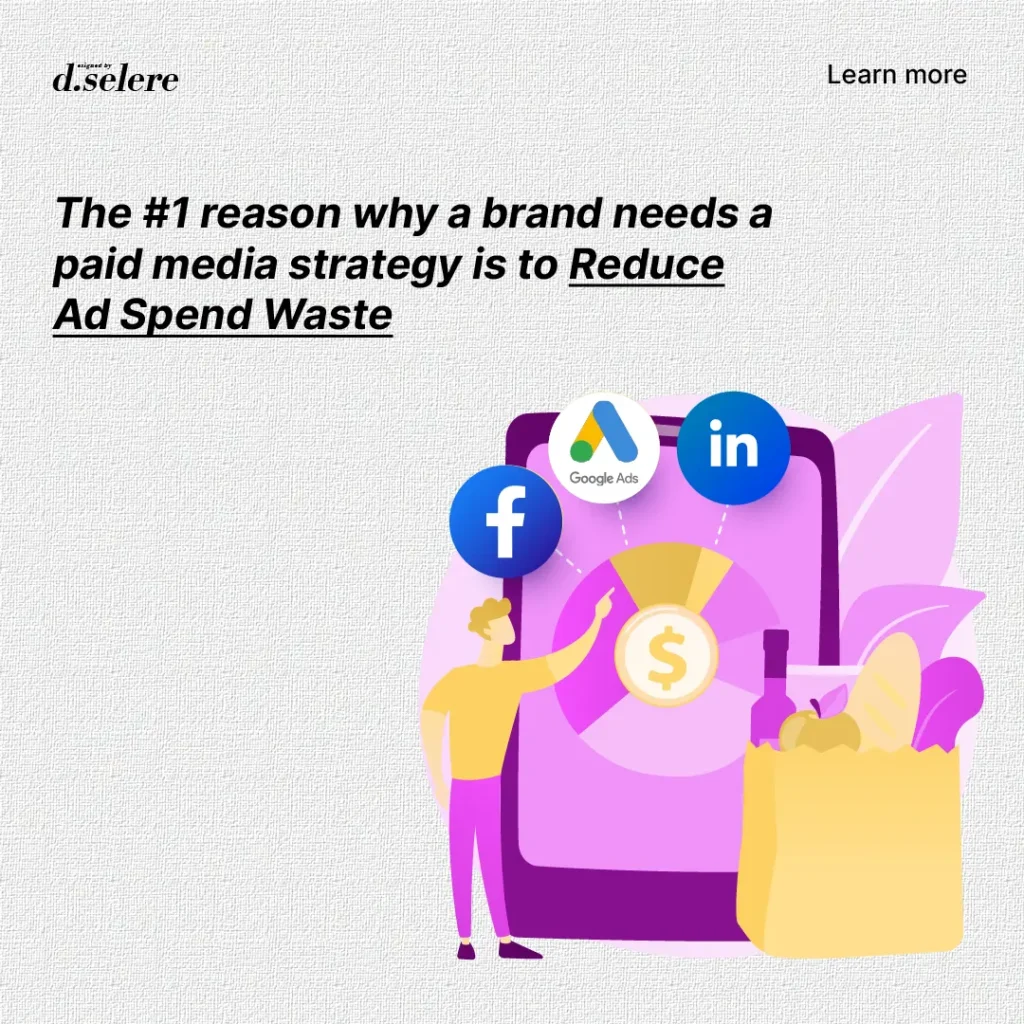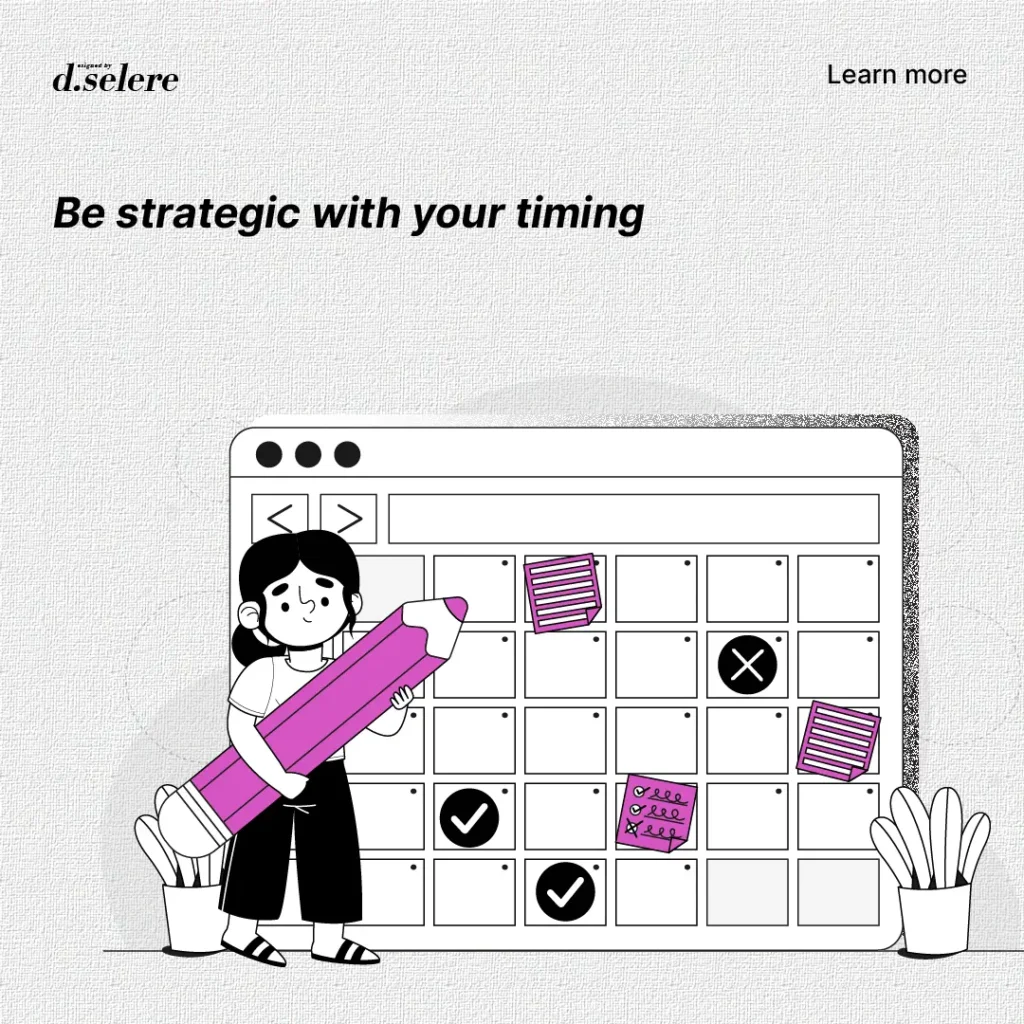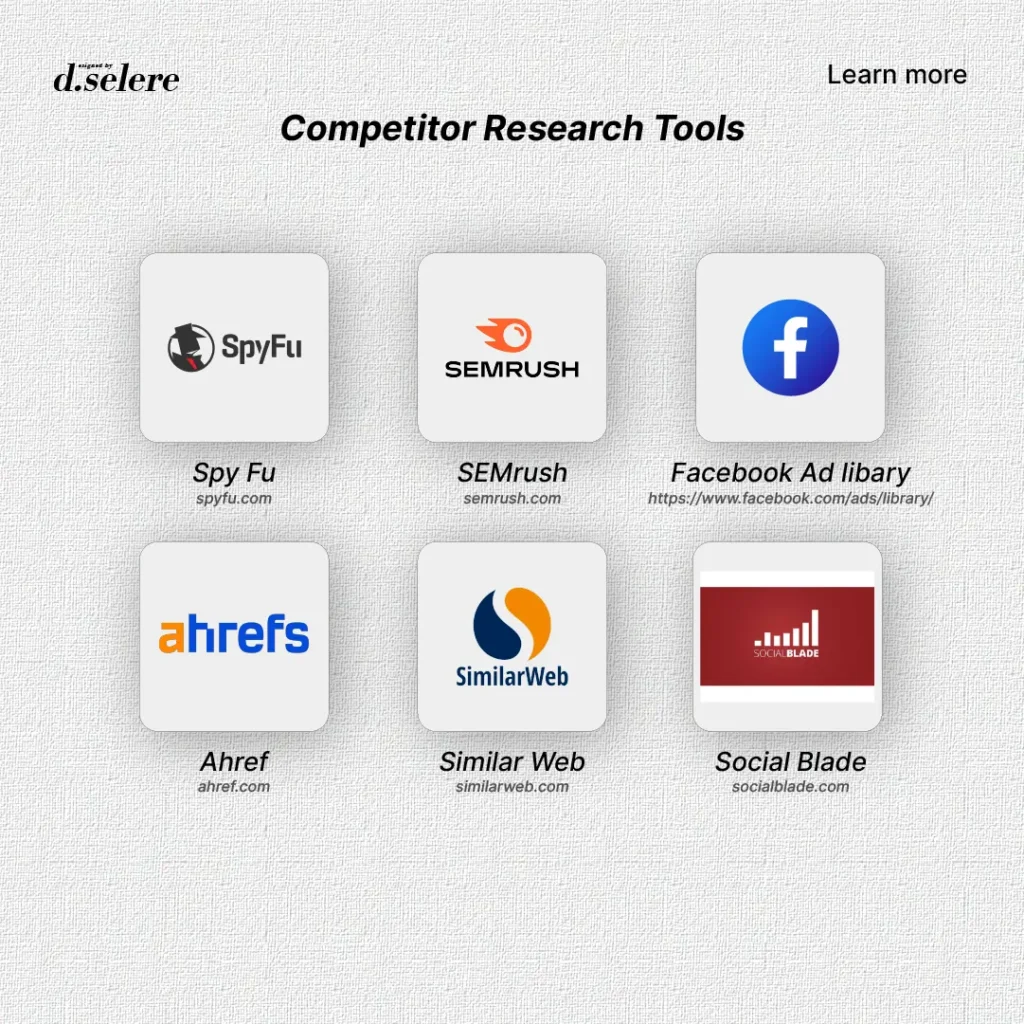Table of Contents
You started your e-commerce business with a simple idea and a lot of passion. At first, everything seemed to work — your product is the next trending item – thanks to word of mouth, organic traffic, and a few social media posts that you made yourself with the help of canva. Orders are through the roof, and the future looks bright. But now, things are slowing down.
The momentum that once seemed unstoppable has started to stall. Your ad costs are no longer sustainable, and reaching new customers is becoming harder. All the statistics on your reports are negative compared to the last month, and suddenly, scaling seems like an uphill battle. Does this feel like where your business is at the moment? OR you are still struggling to make your first few sales.
If you’re here, it’s because you’re ready to take the next step and scale your business without wasting your marketing budget or missing out on growth opportunities. It’s time to learn how to build a paid media strategy that works.
Why It Matters
Paid media is more than just running ads — it’s the fuel that is needed to drive scalable growth for e-commerce brands today. In the early stages, you might have thrived on organic reach and word of mouth, but as your brand grows, so does the competition, and the challenges of reaching new audiences consistently. That’s where a solid paid media strategy can help.
Unlike general ad management, which may focus on short-term wins or simply maintaining traffic, scaling through paid media means creating a strategy that ensures your ad spend is efficient, targeted, and aligned with your growth goals. It’s about having a system in place that continually optimizes performance, finds new customers, and turns clicks into conversions. For example, leading platforms like Google Ads or Meta Ads Manager offer powerful targeting tools to help brands reach the right audience.
This article will walk you through the main steps in creating an actionable strategy designed to drive measurable growth for most brands. It covers strategies like optimizing your ad campaigns to leveraging data insights with tools like Google Analytics. Sit back, get your notes, and see how you can scale your business with the power of effective paid media strategies.
What is a Paid Media Strategy?
Definition
A paid media strategy is a well-thought-out plan for how your brand invests in advertising across various digital channels to reach the right audience at the right time. It goes beyond simply placing ads; it involves making strategic decisions about platforms, ad formats, targeting, and budget allocation to maximize impact. For e-commerce brands, this strategy is critical for long-term success because it allows for consistent growth and scalability, ensuring you’re not just spending but investing in where it matters.
Core Components
A robust paid media strategy includes the following key elements:

-
-
Platform Selection:
Whether it’s Google Ads, Meta Ads, or TikTok for Business, choosing the right platform based on where your audience spends their time is crucial. Your ad dollars will be more effective if they target the right platform.
-
-
-
Ad Formats:
From video ads to carousel ads, knowing which ad formats work best for your goals can significantly impact engagement and conversions. For instance, product-focused video ads might perform better on TikTok, while static image ads might thrive on Instagram.
-
-
-
Campaign Structure
-
-
-
Why It’s Important:
The structure of your campaigns is the foundation for success in paid media. Poorly structured campaigns lead to wasted ad spend, disorganized tracking, and inefficient optimization.
-
-
-
Best Practices:
-
-
Segmentation:
Organize campaigns by objectives (e.g., brand awareness, retargeting, product launch). Create separate ad groups or ad sets based on different product categories, audiences, or geographies.
-
-
-
Budget Allocation:
Start with a small budget per campaign and optimize based on performance. Focus on high-converting campaigns and gradually increase budgets where needed.
-
-
-
Granularity:
Break down campaigns by specific audiences (e.g., cold audiences, warm leads, previous customers) and optimize bids for each segment.
-
-
-
Keyword & Ad Group Organization:
For platforms like Google Ads, use tightly themed ad groups with focused keyword sets. This structure improves Quality Scores and allows more precise bidding.
-
-
-
-
-
Targeting:
This involves honing in on the demographics, interests, behaviors, and geographies that align with your target audience. Tools like lookalike audiences or retargeting on platforms like Facebook can help you reach people most likely to convert.
-
-
-
Performance Tracking:
It’s vital to continuously monitor your campaigns using tools like Google Analytics or platform-specific insights to track KPIs such as click-through rates (CTR), conversion rates, and ROAS (Return on Ad Spend). This helps in making informed decisions and optimizing the campaigns.
-
Value Proposition
A well-planned paid media strategy offers several clear advantages for e-commerce brands:

-
-
Reduced Ad Spend Waste:
By targeting the right audience with the right messaging on the right platform, you can avoid wasting your budget on low-performing ads or irrelevant audiences.
-
-
-
Higher ROI:
With a focused strategy, each ad dollar works harder to bring in returns, leading to a higher return on investment (ROI) through more conversions and sales.
-
-
-
Sustainable Growth:
A strategic approach to paid media ensures that your business isn’t just reacting to trends but is set up for long-term, scalable success, which is what everyone wants.
-
If you’re ready to unlock the power of a paid media strategy, keep reading for a deep dive into creating one that truly works for your brand.
Key Elements to Include in Your Paid Media Strategy
a. Trends/Market Analysis for Your Niche or Industry
Why It’s Important
To stay competitive, it’s crucial to keep a finger on the pulse of your market. Trends and competitor activities shift constantly, and understanding these dynamics can make or break your paid media campaigns. For instance, knowing when seasonal patterns or trending products are influencing buying behaviors can help you adjust your ad strategy for optimal results.
Actionable Tip
Leverage tools like Google Trends to identify emerging trends and patterns in your industry. Similarly, Facebook Audience Insights can help you gather data on customer behavior, while SEMrush allows you to analyze your competitors.
b. SMART Goals or Expected KPIs
Specific, Measurable, Achievable, Relevant, Time-bound (SMART) Goals
Setting SMART goals is the foundation of a successful paid media strategy. Rather than vague objectives like “increase traffic,” set clear, measurable goals like “increase ROAS by 20% in the next three months.” These goals align with your brand’s growth trajectory and provide a framework for ongoing optimization.
KPIs to Focus On
Key performance indicators (KPIs) help measure the success of your paid media campaigns.
-
-
ROAS (Return on Ad Spend): Measures the revenue generated for every dollar spent on ads.
-
-
- CPA (Cost per Acquisition): Tracks how much it costs to acquire a new customer through paid ads.
-
- CTR (Click-Through Rate): Evaluates the percentage of people who clicked on your ad versus those who saw it.
c. Audience Persona or Target Audience
Creating Buyer Personas
To effectively reach your audience, you need to know who they are. Build detailed buyer personas based on demographic, behavioral, and psychographic data. Consider age, location, buying habits, pain points, and what drives them to make a purchase.

Segmentation
Audience segmentation allows you to deliver tailored ads that resonate with different customer groups. Segment your audience into categories like new vs. returning customers, high spenders vs. bargain hunters, or even by their stage in the buyer’s journey. Segmentation improves ad relevance, which leads to better performance and higher conversions.
d. Big Message/Campaign Tagline
Why the Right Messaging Matters
Your core message or campaign tagline sets the tone for your entire ad campaign. It’s the one thing that needs to resonate with your audience on an emotional level while also being clear and aligned with your brand’s values. Messaging that hits the mark can drive not just clicks, but loyal customers.
Examples
Look at successful campaigns like Nike’s “Just Do It” or Apple’s “Think Different.” Both taglines are simple, and memorable, and connect with a larger brand narrative. For e-commerce brands, your tagline could reflect your unique selling proposition, product value, or customer lifestyle. Let’s say you sell shoes. A simple and direct tagline could be, “Run Further, Feel Better,”. And if you sell luxury or fashion shoes, the tagline could be, “Step Into Elegance,”. If you sell eco-friendly shoes, you can use something like, “Every Step Leaves a Smaller Footprint”.
e. Channels, Implementation, and How to Use Them
Choosing the Right Platforms
Your platform selection should be guided by your target audience and campaign goals. For example:

-
- Google Ads for high-intent searches.
-
- Meta Ads for building brand awareness and retargeting.
-
- TikTok for visually driven, trend-based campaigns that engage younger audiences.
Multichannel Approach
An effective paid media strategy uses multiple platforms to reach customers at different touchpoints. Ensuring your messaging stays consistent across channels helps create a cohesive brand experience. For example, you might run retargeting ads on Facebook while using Google for search ads targeting new customers.
Implementation
Ad creatives should match both the platform and your audience’s intent. For Google Ads, focus on compelling copy and call-to-action. For Instagram, invest in high-quality visuals or short videos that resonate with your target audience.
f. How to Track Your Spend
Budget Allocation
Divide your budget based on the expected ROI of each platform. A rule of thumb might be allocating 60% of your budget to high-performing channels while using 40% for testing new platforms or ad formats.
Tools for Monitoring Spend
Tools like Google Analytics, Facebook Events Manager, and attribution models help track ad performance and budget allocation. Keeping an eye on these metrics allows for real-time adjustments.
Adjusting as You Scale
As your campaigns gain traction, be ready to scale by reallocating your budget toward the most successful ads. Track which channels drive the best ROAS, and gradually increase ad spend to capitalize on growth.
When Should You Develop a Paid Media Strategy?
Ideal Timing
The best times to develop or refresh your paid media strategy include:

-
-
Before a Product Launch:
Paid media generates excitement around new releases. Consider creating teaser ads, countdown campaigns, or early-bird offers to capture audience interest before launch.
-
-
-
Seasonal Campaigns:
Plan in advance for high-demand periods like Black Friday, Christmas, or back-to-school sales. Use tools like Google Trends to track seasonal spikes and plan your ad campaigns accordingly.
-
-
-
After Reaching a Revenue Milestone:
If you’ve hit a revenue plateau or goal, this is the time to reassess your strategy. Tools like SEMrush can help analyze competitors and understand what strategies could push you past that plateau.
-
Warning Signs you need to look for when implementing a search strategy
Key indicators that it’s time to rethink your strategy include:
-
-
Rising CPA (Cost per Acquisition):
Rising CPA suggests your ads are becoming less efficient. To lower costs, try adjusting your targeting using platforms like Facebook Audience Insights.
-
-
-
Ad Fatigue:
This occurs when your audience sees the same ads too often, causing engagement to drop. A refreshed creative strategy, using tools like Canva, can help improve engagement and CTR.
-
-
-
Budget Inefficiency:
If your budget is draining quickly with little return, it’s time to refine your strategy. Using budget tracking tools like Google Ads Manager, you can spot inefficiencies and adjust in real time.
-
Proactive Planning
Being proactive allows for long-term success:
-
-
Stay Ahead of Trends:
Use BuzzSumo to track emerging trends or competitor strategies before they dominate the market.
-
-
-
Optimize for Future Growth:
Regular testing of new platforms, like TikTok or Pinterest ads, can reveal untapped growth potential. Start small, then scale based on performance using insights from Google Analytics.
-
How to Spy on Your Competition’s Ad Strategy
Why Competitor Research Matters
Understanding your competitors’ ad strategies can give you a major advantage in the market. By analyzing what’s working (or failing) for them, you can:
-
-
Identify Gaps in the Market:
Spot opportunities they may be missing or areas where you can differentiate your product or messaging.
-
-
-
Refine Your Strategy:
Learn from their successes to enhance your own campaign performance.
-

-
-
Avoid Common Pitfalls:
Discover what’s underperforming for competitors and avoid making the same costly mistakes in your own campaigns.
-
Competitor research allows you to stay ahead of the curve and refine your paid media strategy based on real-world data.
Tools for Competitor Analysis
Several tools can help you gain valuable insights into your competitors’ ad strategies:
[A visual showing screenshots of platforms like Facebook Ads Library, SEMrush, and SpyFu, with arrows pointing out key data points such as ad copy, targeting, and budget.]
-
- Facebook Ads Library: A free tool that allows you to see all the active ads your competitors are running across Facebook and Instagram.
-
- SEMrush: Provides in-depth analysis of competitors’ paid and organic traffic, including ad copies, keywords, and budget estimates.
-
- SpyFu: Offers insights into your competitors’ top-performing PPC ads, organic traffic strategies, and paid ad history.
These tools provide you with an inside look at competitors’ ad formats, targeting, platforms, and messaging.
What to Look For
When researching your competitors, focus on the following key elements:
-
-
Creative Strategies:
Look at their ad designs, messaging, and calls to action (CTA). Are they using videos, images, or carousel ads? Analyze their tone, colors, and branding to understand what’s resonating with their audience.
-
-
-
Campaign Frequency:
Pay attention to how often they run new campaigns. Are they refreshing their creatives frequently to avoid ad fatigue, or sticking with long-running ads?
-
-
-
Audience Targeting:
Investigate who they’re targeting by observing ad placements and messaging. Are they focusing on specific demographics, interests, or behaviors?
-
-
-
Top-Performing Platforms:
Identify where your competitors are investing the most. Are they spending heavily on Facebook, Instagram, Google, or other platforms? This can give you clues on where their audience is most engaged.
-
How to Use the Information you get from spying on your competition
Once you’ve gathered insights from competitor research, here’s how to apply it:
-
-
Improve Your Ad Creatives:
If you notice certain design trends or messaging strategies are performing well, incorporate those elements into your own ads while maintaining your unique brand voice.
-
-
-
Optimize Your Targeting:
If competitors are focusing heavily on a demographic or audience type that you haven’t explored, consider testing similar targeting strategies.
-
-
-
Capitalize on Market Gaps:
If you see competitors over-targeting a certain audience while ignoring others, you can tailor your strategy to capitalize on the missed opportunities.
-
-
-
Avoid Wasting Budget:
By learning from competitors’ underperforming ads, you can avoid similar mistakes in your campaigns, saving valuable time and budget.
-
Competitor research isn’t about copying—it’s about gaining insight to help you build smarter, more effective paid media campaigns.
Best Practices for Scaling Your Paid Media Strategy
Gradual Scaling
When it comes to scaling your paid media campaigns, gradual growth is key. Rapid increases in ad spend or drastic changes in targeting can disrupt your campaign performance. Here’s how to scale step by step:
-
-
Incremental Budget Increases:
Instead of doubling your budget overnight, increase it by 10-20% every few days. This allows algorithms on platforms like Google and Meta to adjust smoothly, minimizing performance fluctuations.
-
-
-
Maintain Campaign Consistency:
As you scale, keep your core targeting, messaging, and creatives consistent. Sudden shifts in these elements can reset learning phases, leading to inefficiencies.
-
-
-
Monitor Results Daily:
Pay close attention to how performance metrics like CPA, CTR, and ROAS change as you scale. Use these insights to fine-tune the budget allocation for each platform.
-
Scaling gradually ensures your campaigns maintain their efficiency and effectiveness while handling larger budgets.
Testing and Iteration
One of the most critical factors in scaling your paid media campaigns is constant testing and iteration. Never assume that your current ad creatives, landing pages, or targeting will perform well forever. Here’s how to approach testing:
-
-
A/B Testing:
Run tests on key elements such as ad creatives, headlines, CTAs, and landing page designs. Use tools like VWO to test variations and find high-converting versions.
-
-
-
Test New Platforms & Formats:
As your campaigns grow, test new ad formats (e.g., video ads, carousel ads) or expand to other platforms like TikTok or Pinterest. Testing new channels allows you to uncover untapped audiences.
-
-
-
Iterate Based on Data:
Gather insights from your testing efforts and continually refine your approach. If one variation significantly outperforms another, shift your budget and strategy accordingly.
-
Remember, the goal is to optimize for long-term success by constantly refining your approach based on data and performance trends.
Automation Tools I can recommend
Automation is your friend when scaling, helping you manage larger budgets without losing control over campaign performance. Here are some tools you can leverage:
-
-
Google Ads Automated Bidding:
Use bidding strategies like Target ROAS or Maximize Conversions to let Google automatically adjust bids for better performance as you scale.
-
-
-
Meta’s Dynamic Ads:
With Meta’s dynamic ads, you can automate personalized product recommendations across Facebook and Instagram, allowing you to scale product ads efficiently based on user behavior.
-
By using automation, you can efficiently manage your campaigns at scale without manually adjusting every detail, saving time and improving results.
Common Scaling Pitfalls
Scaling too fast or without proper strategy can lead to common pitfalls that undermine your efforts. Be aware of the following issues and how to avoid them:
-
-
Ad Fatigue:
As you scale, your audience may become overexposed to the same ad creatives, causing engagement to drop. To avoid this, refresh your ads regularly by changing visuals, CTAs, or messaging.
-
-
-
Audience Saturation:
When targeting smaller or highly specific audiences, scaling too fast can lead to saturation, where you repeatedly serve ads to the same users. Combat this by broadening your targeting or introducing lookalike audiences.
-
-
-
Diminishing Returns:
At some point, increasing your budget might not lead to proportional increases in conversions. Keep a close eye on metrics like CPA and ROAS, and don’t be afraid to pause campaigns that aren’t scaling profitably.
-
Scaling requires a delicate balance between increasing budget and maintaining performance. By avoiding these common mistakes, you can grow your campaigns sustainably and profitably.
The Future of Paid Media for E-commerce Brands
Emerging Trends
The world of paid media is evolving at a rapid pace, and e-commerce brands need to stay ahead of the curve to remain competitive. Here are some key trends shaping the future of paid media:
-
-
AI-Driven Ads:
The use of artificial intelligence (AI) in paid media is set to transform how campaigns are optimized. AI can automatically adjust bids, improve targeting, and even create personalized ad creatives, making campaigns more efficient and effective at scale.
-
-
-
Voice Search Advertising:
As more consumers use voice search through devices like Amazon Alexa or Google Home, optimizing your ads for voice queries will become increasingly important. Brands that can adapt to this shift will have a competitive edge.
-
-
-
Privacy Updates and Data Tracking:
With increasing privacy regulations like GDPR and Apple’s iOS updates affecting ad tracking, brands will need to adopt alternative strategies such as server-side tracking and focus on first-party data. Expect to see more emphasis on contextual advertising, where ads are placed based on the content of the page rather than tracking users across the web.
-
-
-
Augmented Reality (AR) Ads:
Augmented reality is becoming a popular way for e-commerce brands to showcase products, allowing users to interact with them virtually. Platforms like Instagram and Snapchat already offer AR ad formats, and this trend is likely to grow in the coming years.
-
Adaptability
In this fast-evolving landscape, adaptability is crucial. Brands that remain agile and continuously adapt to new technologies and platforms will be the ones that succeed long-term. Here’s what to focus on:
-
-
Invest in Emerging Platforms:
As platforms like TikTok continue to grow in popularity, being an early adopter of new channels can help you capture untapped audiences.
-
-
-
Stay Updated on Privacy Regulations:
Make sure your paid media strategy is compliant with the latest privacy updates and legislation to avoid penalties while maintaining effective targeting.
-
-
-
Experimentation:
Always be open to testing new ad formats, platforms, and strategies to see what works best for your brand. Staying flexible and curious will ensure that your brand is ready for whatever comes next in paid media.
-
Conclusion
Building a successful paid media strategy is essential for e-commerce brands looking to scale efficiently and sustainably. From understanding the importance of trends and setting SMART goals to leveraging competitor research and avoiding scaling pitfalls, this guide provides the tools needed to take your paid media strategy to the next level.
Staying on top of emerging trends like AI-driven ads and privacy changes will help ensure your campaigns remain effective in the future, while testing and iteration will ensure they perform optimally in the present.
Want to dive deeper into building a paid media strategy for your brand? Book your free Paid media strategy session for personalized insights or a free consultation. Let’s scale your brand to new heights together!